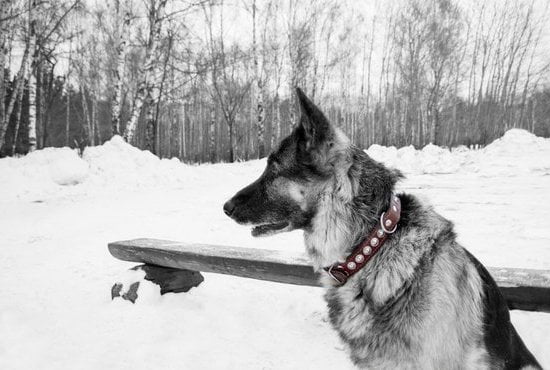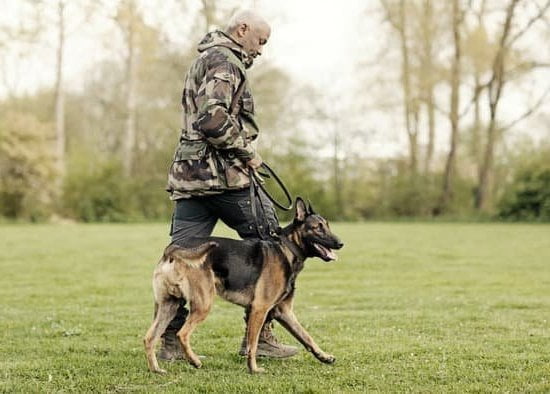Are you asking yourself, “should I crate train my rescue dog“? If you’ve recently adopted a rescue dog, you may be considering whether or not crate training is the right choice for your new furry friend. In this article, we will explore the benefits of crate training for rescue dogs and provide valuable insight into why it can be a game-changer for their behavior and well-being.
Crate training offers numerous advantages for rescue dogs, including creating a safe space, addressing separation anxiety, and helping them adjust to their new environment. By understanding these benefits, you can make an informed decision about whether crate training is the right choice for your rescue dog.
We will also address common myths and misconceptions about crate training rescue dogs, as well as provide practical tips on how to properly introduce your rescue dog to crate training. Additionally, we’ll share real-life success stories that demonstrate how crate training has helped rescue dogs adjust to their new homes.
Whether you’re new to crate training or looking for guidance on how to improve your current approach, this article will equip you with valuable information to support your rescue dog’s well-being.
The Importance of Creating a Safe Space for Your Rescue Dog
Crate training can be a beneficial tool in providing a safe and secure space for your rescue dog. Whether you have just adopted a new furry friend or have been struggling with behavioral issues, creating a safe space can make a world of difference for your canine companion. Here are some key points to consider when understanding the importance of creating a safe space for your rescue dog:
- Providing Security: Rescue dogs often come from unknown backgrounds and may have experienced trauma or neglect. A crate can provide a sense of security and comfort, giving them a space that is entirely their own.
- Managing Stress: Many rescue dogs suffer from anxiety or stress, especially when adapting to a new environment. A crate can serve as a calming retreat where they can feel safe and relaxed.
- Establishing Boundaries: Introducing your rescue dog to crate training helps set boundaries within the home. This can prevent destructive behavior and promote positive habits, such as potty training.
It is important to note that while crate training can be highly beneficial for many rescue dogs, it is not suitable for every pup. Some may not respond well to being confined, while others may already display signs of anxiety around confinement.
It is crucial to assess your individual dog’s needs and temperament before deciding whether crate training is the right approach. Consulting with a professional trainer or behaviorist should i crate train my rescue dog can provide valuable insights into whether this method will be effective for your furry friend.
Addressing Separation Anxiety in Rescue Dogs Through Crate Training
For many rescue dogs, separation anxiety is a common issue that can lead to destructive behaviors and stress for both the dog and their owners. Crate training can be an effective way to address separation anxiety in rescue dogs, providing them with a safe and secure space when their owners are not at home.
Crate training provides a den-like environment for your rescue dog, which can help ease their anxiety by giving them a sense of security and comfort. When introduced properly, the crate becomes a positive association for your dog, serving as a place where they feel safe and relaxed. This can greatly reduce their panic and anxiety when left alone, as they have their own designated space to retreat to.
It’s important to note that crate training should be introduced gradually and in a positive manner to effectively address separation anxiety in rescue dogs. Forcing your dog into the crate or using it as punishment will only exacerbate their anxiety and create negative associations with the crate. Instead, using positive reinforcement such as treats, toys, and praise can help your rescue dog feel more comfortable with their crate over time.
Crate Training vs Free Roaming
When it comes to crate training versus free roaming for your rescue dog, there are several factors to consider. Both options have their own set of pros and cons, and what works best for one dog may not work for another. It is important to assess your individual rescue dog’s needs and behavior before making a decision.
Crate training can be beneficial for rescue dogs, especially those who may have experienced trauma or anxiety in the past. A crate can provide a safe and secure space for them to retreat to when they need some alone time or when they are feeling anxious. It can also prevent destructive behavior when you are not able to supervise them, keeping both your dog and your belongings safe.
On the other hand, free roaming allows your rescue dog to have more freedom and movement around the house. This can be beneficial for dogs who are well-behaved and do not exhibit destructive behaviors. However, it is important to note that free roaming requires a higher level of trust in your dog’s behavior, as well as ensuring that your home is safe and secure for them to move around in.
Ultimately, whether you decide to crate train or allow free roaming for your rescue dog should depend on their individual needs and behavior. It may also be beneficial to consult with a professional trainer or behaviorist who can provide personalized advice based on your specific situation.
| Crate Training | Free Roaming |
|---|---|
| Provides a safe space | Allows more freedom |
| Prevents destructive behavior | Requires higher trust in dog’s behavior |
| May help with separation anxiety | Requires a safe and secure home environment |
How to Properly Introduce Your Rescue Dog to Crate Training
Introducing a rescue dog to crate training can be a crucial step in helping them adjust to their new home and promoting positive behaviors. Properly introducing your rescue dog to crate training is essential to ensure that they see the crate as a safe and comfortable space rather than a punishment. Here are some steps you can take to introduce your rescue dog to crate training effectively.
Gradual Introduction
When introducing your rescue dog to the crate, it’s important to take things slow. Start by leaving the crate door open and placing comfortable bedding inside. Allow your dog to explore the crate at their own pace without any pressure. You can encourage them with treats or toys, but never force them into the crate.
Positive Associations
It’s crucial to create positive associations with the crate for your rescue dog. You can do this by feeding them their meals near the crate or placing their favorite toys inside. This will help them view the crate as a source of comfort and security rather than confinement.
Patience and Persistence
For some rescue dogs, especially those who may have experienced trauma in the past, adjusting to crate training may take time. It’s important to be patient and persistent in your efforts, offering reassurance and praise when they show interest in or enter the crate on their own. With time and consistency, many rescue dogs come to see the crate as their own safe space.
By following these steps and approaching the process with patience and understanding, you can effectively introduce your rescue dog to crate training in a way that promotes their well-being and helps them adjust positively to their new environment. Ultimately, proper introduction to the crate can set the foundation for a happy and well-adjusted relationship between you and your rescue dog.
Common Myths and Misconceptions About Crate Training Rescue Dogs
Many dog owners have reservations about crate training their rescue dogs due to common myths and misconceptions. It is important to address these myths and provide clarity on the benefits of crate training for rescue dogs.
Myth 1: Crate Training Is Cruel
One of the most common myths about crate training is that it is cruel and inhumane. In reality, when done properly, crate training can provide a safe and comfortable space for a rescue dog. It can also help with potty training, reduce anxiety, and keep your dog out of trouble when you’re not home.
Myth 2: Rescue Dogs Will Never Adjust to Crate Training
Some people believe that rescue dogs, especially those with a traumatic past, will never adjust to crate training. However, many rescue organizations recommend crate training as a way to help these dogs feel secure and establish a routine. With patience and positive reinforcement, most rescue dogs can adapt well to crate training.
Myth 3: Crate Training Restricts a Dog’s Movement
Another misconception is that crate training restricts a dog’s movement and limits their freedom. In reality, the crate should be appropriately sized for the dog, allowing them to stand up, turn around, and lie down comfortably. Over time, the crate becomes a safe haven for the dog rather than a confinement.
By addressing these common myths and misconceptions about crate training rescue dogs, dog owners can make informed decisions about whether or not to implement this form of training with their own pets. Ultimately, understanding the true benefits of crate training can help both the owner and the rescued dog create a nurturing environment where they can thrive together.
The Dos and Don’ts of Crate Training Your Rescue Dog
Crate training can be an effective way to help your rescue dog adjust to their new home and improve their behavior. However, it’s important to approach crate training with the right dos and don’ts in mind to ensure that it is a positive experience for your furry friend.
One of the dos of crate training your rescue dog is to make the crate a comfortable and inviting space for them. You can do this by adding soft bedding, toys, and treats inside the crate to create a positive association. It’s also important to gradually introduce your dog to the crate, allowing them to explore it at their own pace before encouraging them to spend time inside.
Another crucial aspect of crate training is using the crate as a tool for managing separation anxiety. When used properly, the crate can provide a sense of security for dogs with separation anxiety, as it mimics a den-like environment where they can feel safe and secure while you are away. This can help alleviate stress and prevent destructive behaviors often associated with separation anxiety.
On the other hand, there are also some don’ts when it comes to crate training your rescue dog. For instance, it’s important not to use the crate as a form of punishment. The crate should never be associated with negative experiences or isolation. Additionally, it’s crucial not to leave your dog in the crate for extended periods without breaks for exercise, bathroom breaks, and interaction with you.
Properly following these dos and don’ts of crate training can lead to a successful and positive experience for both you and your rescue dog. By creating a safe and comforting space for your furry friend through crate training, you can help them adjust to their new home while setting them up for good behavior in the long run.
Real Life Success Stories
Crate training can be an invaluable tool in helping rescue dogs adjust to their new homes. Many rescue dogs come from uncertain or even traumatic backgrounds, and having a safe and secure space such as a crate can provide them with a sense of security and stability.
Some rescue dogs may also have never been introduced to the concept of crate training before, so it is important for owners to understand how to properly introduce and use the crate in order to help their new pet acclimate.
One real-life success story involves a rescue dog named Max who struggled with severe separation anxiety after being adopted. His new owner, Sarah, decided to implement crate training in the hopes that it would alleviate Max’s anxiety. After carefully introducing him to the crate and creating a positive association with it, Sarah gradually increased the amount of time Max spent in the crate when she was away.
Through consistent training and positive reinforcement, Max began to see his crate as a safe haven rather than a source of distress. Over time, his separation anxiety diminished significantly, and he was able to relax and feel secure while in his crate.
In another instance, Lucy, a nervous rescue dog who had difficulty adjusting to her new surroundings, found comfort in her crate. Her owner, Tom, made sure to make the crate inviting by placing soft bedding inside and leaving the door open for Lucy to explore at her own pace. As Lucy became more comfortable with the crate, Tom started using it during times when he needed to leave the house.
This helped Lucy establish a routine and feel more at ease when left alone. The crate ultimately became her safe space where she could retreat whenever she felt overwhelmed or anxious.
Overall these success stories emphasize that proper introduction and positive reinforcement are key components of successfully using crate training for rescue dogs. By providing them with a secure environment that they can call their own, rescue dogs can overcome their anxieties and settle into their new homes more easily.
Conclusion
In conclusion, the decision to crate train your rescue dog can have a significant impact on their behavior and well-being. While some may question, “Should I crate train my rescue dog?” the numerous benefits outlined in this article speak for themselves.
Crate training provides a safe space for your dog, helps address separation anxiety, and aids in creating a sense of security and routine. It also allows for easier management and supervision, especially during the adjustment period in their new home.
Creating a safe and comforting environment for your rescue dog is paramount, and crate training can play a crucial role in achieving this. By providing them with their own personal space, you are offering them a place where they can feel secure and relaxed. This is particularly important for rescue dogs who may have experienced trauma or neglect in the past, as it can help to alleviate anxiety and encourage feelings of safety.
Ultimately, while crate training may not be suitable for every rescue dog, it is certainly worth considering as part of their overall training and adjustment process. When done correctly, crate training can greatly improve your rescue dog’s behavior and overall well-being, leading to a more harmonious relationship between you and your furry friend. So when asking yourself “Should I crate train my rescue dog?” consider the potential benefits it could bring to both you and your beloved pet.
Frequently Asked Questions
How Long Should You Crate a Rescue Dog?
The length of time a rescue dog should be crated depends on various factors such as their age, past experience with crates, and level of anxiety. It’s important to gradually increase the time spent in the crate to help them adjust.
Should My Rescue Dog Sleep in a Crate?
Whether or not your rescue dog should sleep in a crate depends on their individual needs and behavior. Some rescue dogs find comfort and security in sleeping in a crate, while others may prefer to sleep outside of it. It’s essential to observe their behavior and make adjustments accordingly.
Do Rescues Like Crate Training?
Not all rescues like crate training, as some may have had negative experiences with confinement in the past. However, with patience, positive reinforcement, and gradual acclimation, many rescue dogs can learn to tolerate or even enjoy being in a crate. It’s crucial to introduce crate training gently and respect the individual needs of each rescue dog.

Welcome to the blog! I am a professional dog trainer and have been working with dogs for many years. In this blog, I will be discussing various topics related to dog training, including tips, tricks, and advice. I hope you find this information helpful and informative. Thanks for reading!





